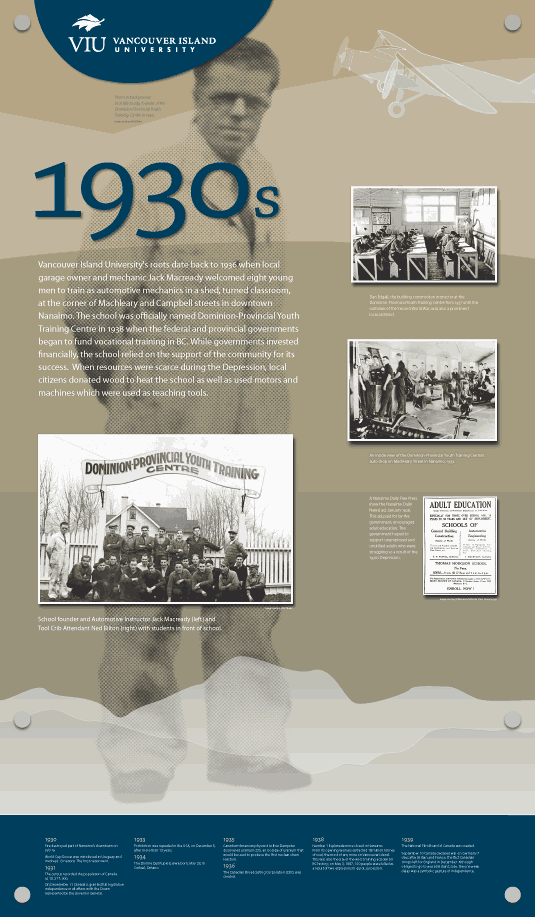1936 marks the first year a public vocational training course was offered in Nanaimo, BC. Jack Macready, a local garage owner, taught automotive mechanics to eight boys in his converted shed. The course was offered through a Provincial and Chamber of Commerce partnership in response to national concern about the "idleness" of unemployed/unskilled youth resulting from the Great Depression.
The federal initiative to "take every possible step to see to it that young men and women are given opportunities within which they may realize their desire for remunerative employment" led John Kyle, BC's Director of Technical and Vocational Education, to herald vocational training as the nation's solution to youth (18-30) unemployment. Mr. Kyle came to Nanaimo in September, 1937 with an announcement that free classes sponsored by Dominion and Provincial governments in automotive mechanics and building construction would start in Nanaimo immediately providing sufficient enrollments were made.
Macready moved his automotive classroom to an unused building at the site of Thomas Hodgson School at Machleary and Campbell Streets in Nanaimo in February, 1938. Daniel B. Egdell, a prominent local architect hired to teach building construction, joined Macready and the promised courses began with a total enrollment of 47. Ned Bilton was also hired to coordinate the use, organization, and storage of tools. Instructor salaries were $125 per month and these first courses under the Dominion-Provincial youth training initiative ran 10 months. Art Baker, one of the automotive students in Macready's 1938 class remembers the three school leaders as passionate, caring, and dedicated men who put the needs of students first. Above the entrance of the young school hung a sign welcoming visitors, students, and staff to the Dominion-Provincial Youth Training Centre. In 1939 the Youth Training Act was established which resulted in more government support and funding for vocational training in BC.
The 1938/1939 Public Education Report by F.T. Fairey (Kyle's successor) indicated that building construction and automotive mechanics enrollment numbers nearly doubled to 97 in the second year of operation and that a dressmaking course was also offered to 27 women.

